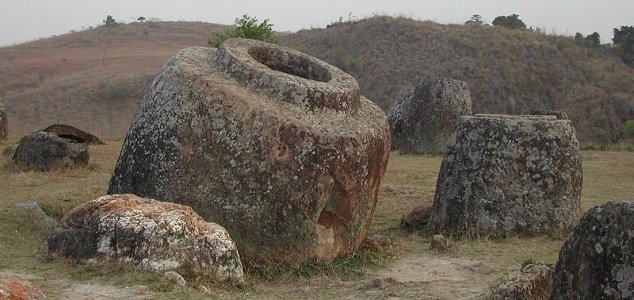
The jars were built in many different shapes and sizes.
An ancient burial ground containing human remains has been unearthed at a site in Southeast Asia.
Believed to date back up to 2,500 years, the megalithic landscape, which is home to thousands of mysterious stone jars, is considered to be one of the most important prehistoric sites in Asia.
Surprisingly little is known about the ancient people who built the jars, however researchers generally agree that the stone vessels were associated with prehistoric burial practices.
Given the craftsmanship exhibited in the construction of the jars and the sheer number of them scattered across the region, the investment in time and resources must have been staggering.
Now following a series of recent excavations funded by the Australian Research Council, archaeologists have made a significant discovery in the form of an ancient burial ground.
Remains found at the site, including whole bodies and bundles of bones, have so far helped to reveal much about how these ancient people prepared and interred their dead.
Dr Louise Shewan, a researcher from the Monash Warwick Alliance and Center for Archaeology and Ancient History, has been studying teeth from the bodies in an effort to learn more about them.
“My research involves the measurement of strontium isotopes in human dental enamel to shed light on the home environment of the individual,” she said. “Teeth mineralise at different ages, so by analsying different teeth we are able to ascertain where an individual lived during their childhood.”
Her research is still ongoing, but with any luck, once all the recent finds have been analyzed in detail, it may finally be possible to piece together who these ancient jar builders actually were.
Originally posted 2016-03-30 20:27:50. Republished by Blog Post Promoter












